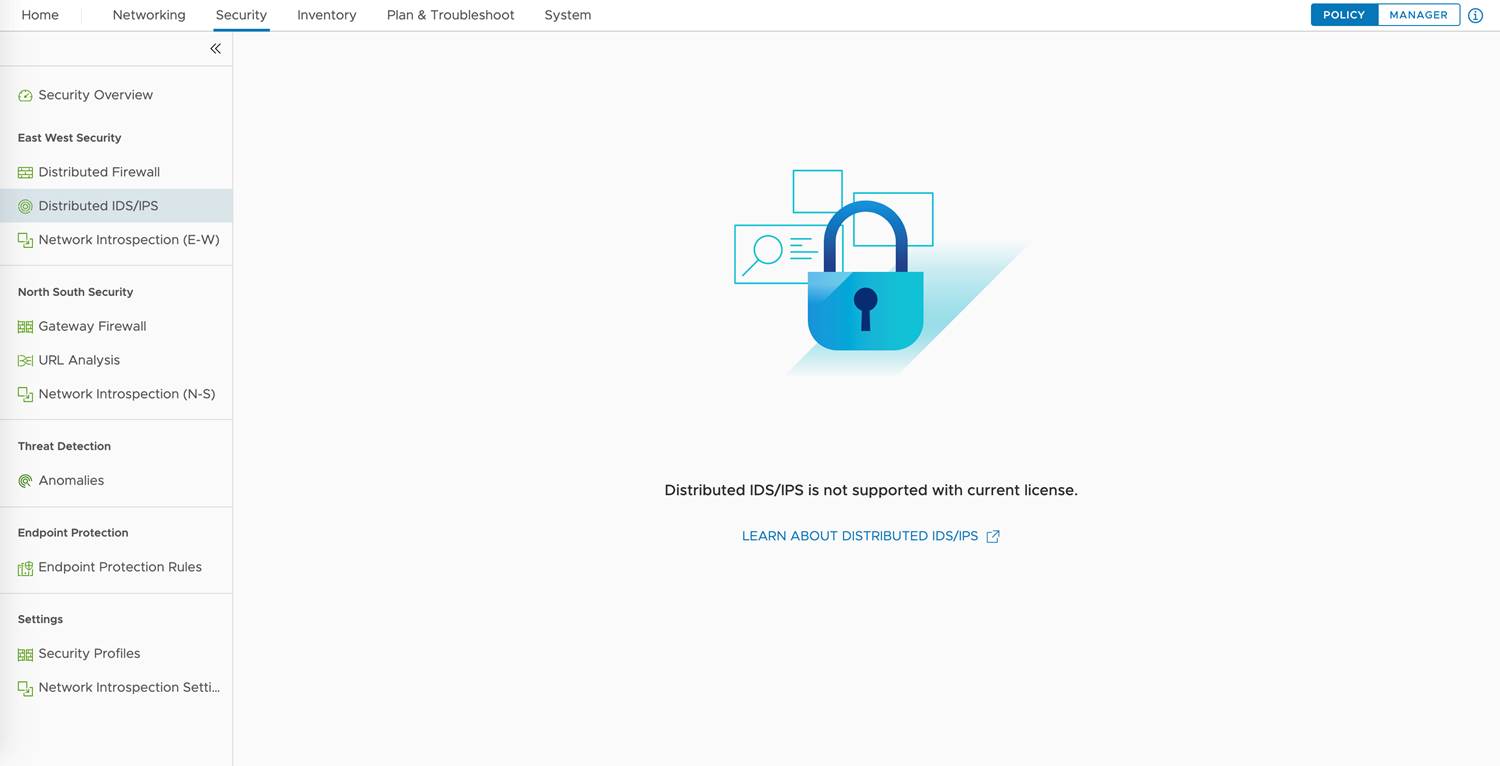License compliance is enforced when you try to access features in the NSX Manager user interface. The license enforcement is based on features and time, but not capacity. The capacity enforcement is honor-based.
Beginning with NSX-T Data Center 3.1, the NSX license editions that you have assigned to your NSX-T Data Center deployment determine which features you can access in the Policy mode of the NSX Manager user interface. If you have multiple editions of licenses, NSX Manager uses the highest license edition that is applicable.
- NSX Data Center Enterprise Plus, NSX Enterprise Plus per Processor (Limited Export), NSX Data Center Evaluation
- NSX Data Center Advanced, NSX for vSphere - Enterprise, NSX for vSphere - Advanced, NSX Data Center Advanced per Processor (for Limited Export)
- NSX Data Center Remote Office Branch Office (ROBO)
- NSX Data Center Professional
- NSX Data Center Standard and NSX for vSphere - Standard
- NSX for vShield Endpoint
- Add-on license is checked for add-on features, such as NSX Data Center Distributed Threat Prevention.
The assigned license is used to determine the list of features that you are allowed to use in the NSX Manager user interface. If you are a new user, you can only access those features that are available in the license edition that you have purchased. If you try to access a feature that is not valid for your current license, you see a message similar to what is shown in the following screenshot.

You can upgrade your current NSX-T Data Center deployment to NSX-T Data Center 3.1 or later regardless of the license that is in effect. Similarly, you can perform a backup or restore operation regardless of the license that is in effect. However, after a successful upgrade, backup, or restoration of a backup, the license enforcement is applied based on the current valid assigned license to your NSX-T Data Center deployment.

If NSX Manager has another valid license with a lower priority, alongside the expired higher priority license, then the features are enabled based on the priority of the valid license.
The list of supported features for the different VMware NSX Data Center license editions is available in the VMware NSX Data Center Datasheet at https://www.vmware.com/content/dam/digitalmarketing/vmware/en/pdf/products/nsx/vmware-nsx-datasheet.pdf. In that document, locate the VMware NSX Data Center Editions section and identify the license edition that is required for the features you want to use.
See Add a License Key and Generate a License Usage Report for more information on how to add a license key. You can also find information about the restrictions of the default license, NSX for vShield Endpoint, that is used when you install NSX Manager.